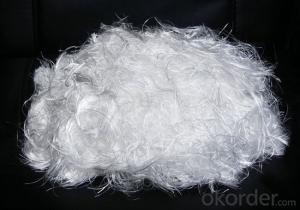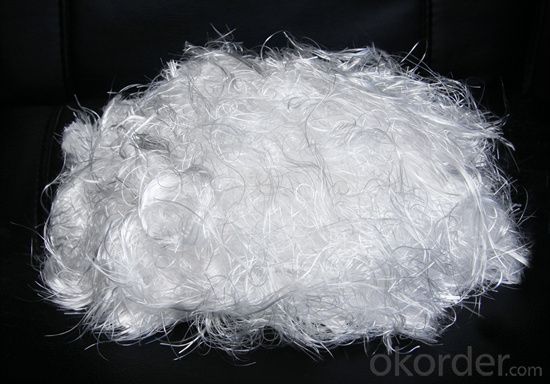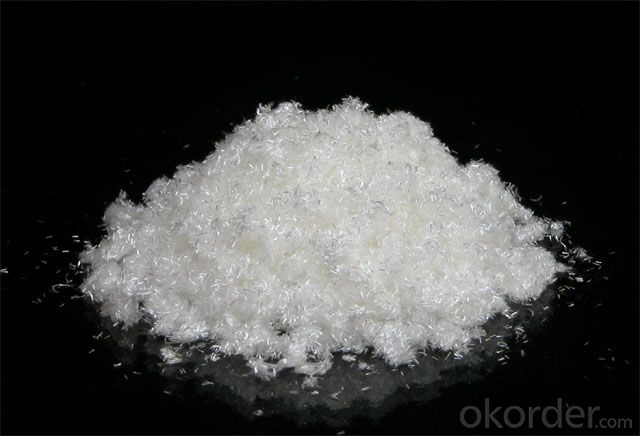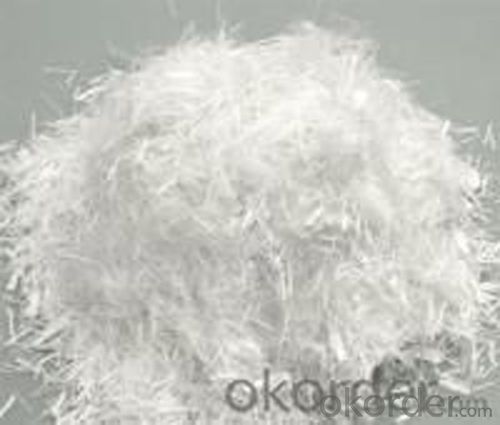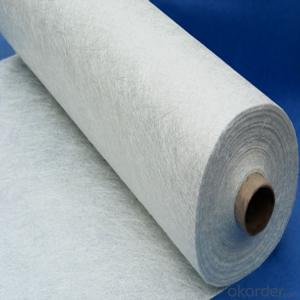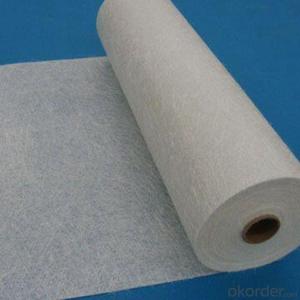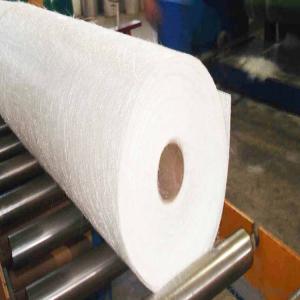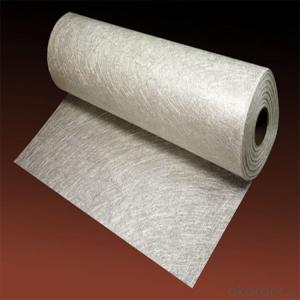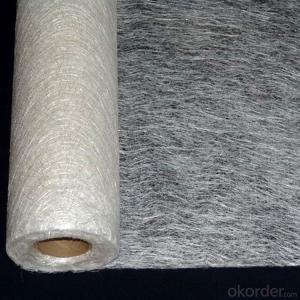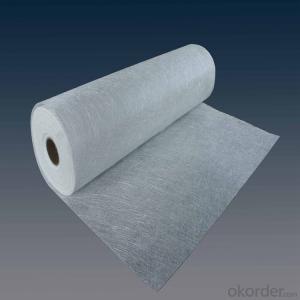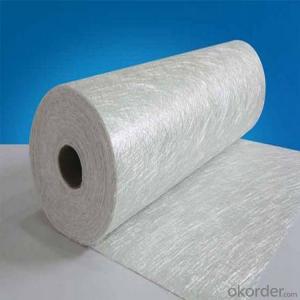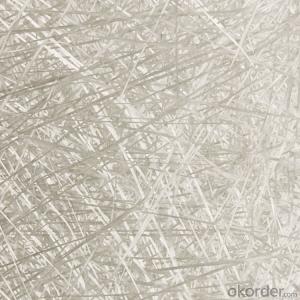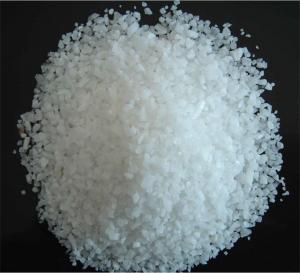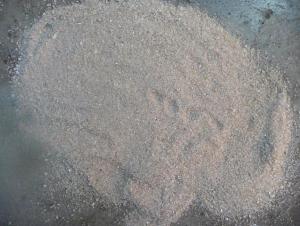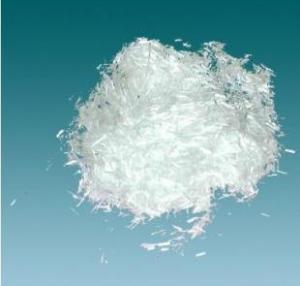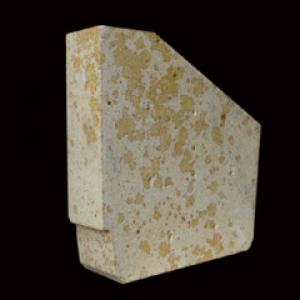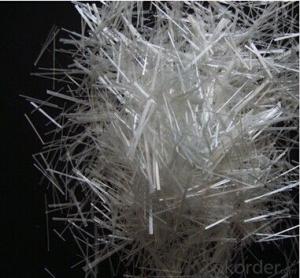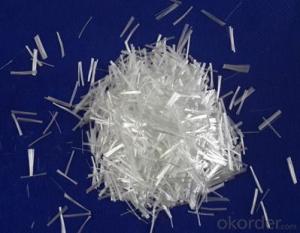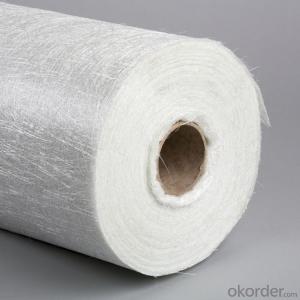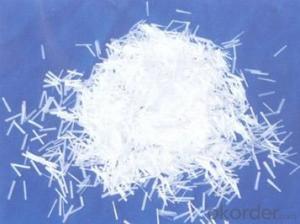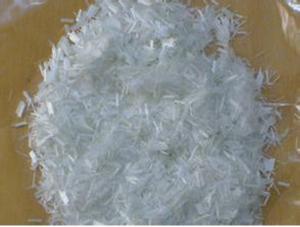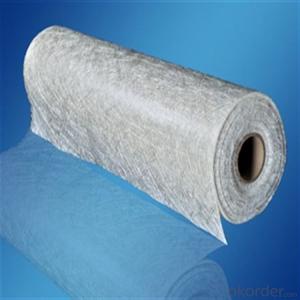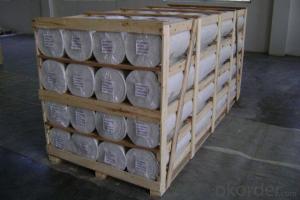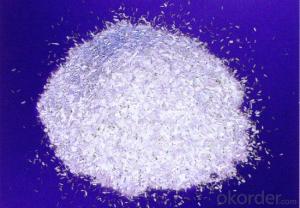High Silica Chopped Strands
- Loading Port:
- China Main Port
- Payment Terms:
- TT or LC
- Min Order Qty:
- 4000 kg
- Supply Capability:
- 5000000 kg/month
OKorder Service Pledge
OKorder Financial Service
You Might Also Like
Product Description
Silica fiberglass is inorganic fiber that contents more than 96% of SiO2, it's resistant to high temperature, soft point 1700°C, long term service temperature 900 °C, it can work 10 minites at 1450 °C and keeps good state at 1600 °C for 15 seconds. For it's properties of chemical stability, high temperature resistance and ablation resistance, it widely used in aviationand aerospace, metallurgy, chemical, building material and fire fighting industry, etc.
Our factory is the only one that specialized manufacture silica fiberglass in China and has the production line of the whole process from marble making, fiber forming, weaving, and finish. The strength of silica fiberglass made from Na2O-B2O3-SiO2 system glass is 3-5 times higher than that from E glass. The products sold to more than 20 provinces, cities, autonomous regions and exported to foreign countries.
Silica fiberglass products are available in forms of needled mat, fabric, scrim, staple yarn, chopped strand and cord, etc.
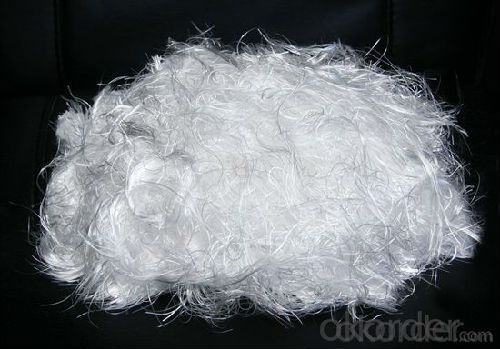
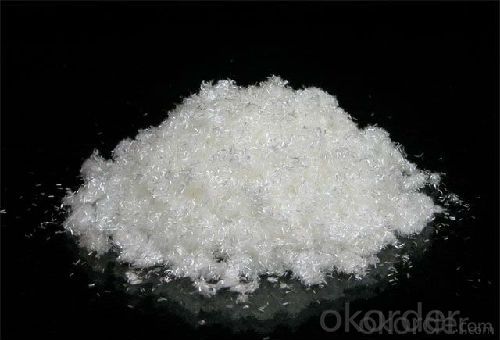
Specification
| Product Code | SCD-06 | SCF-60 | SCD-06-S | SCF-60-S |
| Length(mm) | 6 | 60-100 | 6 | 60-100 |
| Diameter | 6um/9um | 6um/9um | 6um/9um | 6um/9um |
| L.O.I.% | 7-12 | 7-12 | ≤5 | ≤5 |
Product Application
· High temperature resistant, insulation and sealing material
· High temperature ablation resistant material
· Fireproof material (for fireproof protective clothe, fireproof curtain, fire blanket)
· Dust collecting in media of high temperature gas and filtration in media of high temperature liquid
· Filter for molten metal
· Distinguisher, insulation material, filtration of automobile and motorcycle
· Protective material for welding
· Electricity insulation material
Package and delivery time
Package:High silica chopped strand is packed with bags and pallets,totally 20 pallets one 20GP.
Delivery time:The products will be ready in 7-15 days after the confirmation of the order.
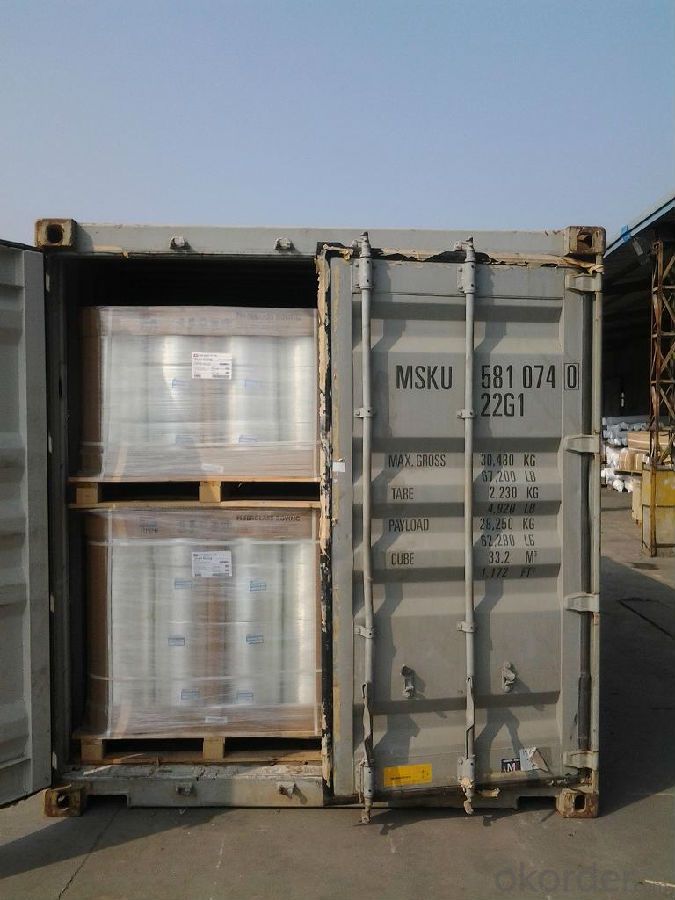
FAQ
Q: Can you accept sample order?
A: Yes, we accept samples with little and reasonable charge
Q:What is your delivery time?Can we short it in 7 days or less?
A: 3 days for sample, 3-25 days for mass production(depend quantity).
- Q: Is fiberglass chopped strand compatible with different manufacturing processes?
- Yes, fiberglass chopped strand is compatible with different manufacturing processes. Fiberglass chopped strand is a versatile material that can be used in various manufacturing processes such as compression molding, injection molding, and filament winding. It can be mixed with different resins, such as polyester, epoxy, or vinyl ester, to create composite materials with different properties. The chopped strand can be easily incorporated into these processes, ensuring good dispersion and reinforcement throughout the final product. Additionally, fiberglass chopped strand can be used in sheet molding compounds (SMCs) and bulk molding compounds (BMCs) to produce high-strength and lightweight parts. Overall, fiberglass chopped strand offers flexibility and compatibility with different manufacturing processes, making it a popular choice in industries such as automotive, aerospace, construction, and marine.
- Q: How does the fiber orientation of fiberglass chopped strand affect the mechanical properties of composites?
- The fiber orientation of fiberglass chopped strand has a significant impact on the mechanical properties of composites. When the fibers are randomly oriented, the composite exhibits isotropic behavior with similar strength and stiffness in all directions. However, if the fibers are aligned in a specific direction, the composite becomes anisotropic, with enhanced strength and stiffness along the fiber direction. This alignment allows for better load transfer and improved resistance to deformation in the aligned direction. Therefore, the fiber orientation plays a crucial role in determining the mechanical properties of fiberglass chopped strand composites.
- Q: Can fiberglass chopped strand be used in the production of pipes and tanks?
- Yes, fiberglass chopped strand can be used in the production of pipes and tanks. Fiberglass chopped strand is commonly used as a reinforcement material in the manufacturing of various composite products, including pipes and tanks. The chopped strand is typically mixed with a resin matrix, such as polyester or epoxy, and then molded into the desired shape. The fiberglass reinforcement provides excellent strength, durability, and corrosion resistance to the final product, making it suitable for applications in the pipe and tank industry. Additionally, fiberglass chopped strand offers good dimensional stability, low thermal expansion, and high chemical resistance, which are essential properties required in the production of pipes and tanks. Overall, the use of fiberglass chopped strand in the manufacturing process helps to enhance the structural integrity and longevity of pipes and tanks.
- Q: How does the fiber diameter affect the properties of fiberglass chopped strand?
- The properties of fiberglass chopped strand are significantly influenced by the diameter of its fibers. The strength, flexibility, and overall performance of the fiberglass are directly impacted by the fiber diameter. When the fiber diameter is smaller, it generally leads to increased strength and stiffness of the chopped strand. This is because the smaller fibers can tightly pack together, resulting in a higher fiber volume fraction and enhancing the material's load-bearing capacity. Additionally, smaller fibers tend to have fewer defects, further improving their strength. On the other hand, larger fiber diameters can contribute to increased flexibility and impact resistance of the chopped strand. The larger fibers provide more space for movement and deformation, allowing the material to absorb and dissipate energy during impacts or bending. This can be advantageous in applications where toughness and resilience are crucial, like automotive parts or sports equipment. The fiber diameter also affects the surface area of the chopped strand. Smaller fibers have a greater surface area per unit volume, which enhances the bonding and adhesion of the fibers with the resin matrix. This results in improved mechanical properties, including increased tensile strength and better resistance to delamination. Moreover, the processing characteristics of the chopped strand are influenced by the fiber diameter. Smaller fibers disperse more easily in the resin, leading to a more homogeneous mixture and overall better performance. Conversely, larger fibers may require additional processing steps, such as chopping or grinding, to achieve proper dispersion and ensure uniformity in the final product. To summarize, the fiber diameter of fiberglass chopped strand is crucial in determining its mechanical, processing, and performance properties. The selection of the appropriate fiber diameter depends on the specific requirements of the application, considering factors like strength, flexibility, impact resistance, and processability.
- Q: How is fiberglass chopped strand used in the water treatment industry?
- Fiberglass chopped strand is commonly used in the water treatment industry for the reinforcement and strengthening of various filtration systems. It is often incorporated into the manufacturing of filter media, such as filter cartridges and bags, to enhance their durability and mechanical strength. The fiberglass chopped strand helps to prevent filter media from collapsing or tearing under high pressure or heavy loads, ensuring efficient and reliable water filtration processes.
- Q: How is fiberglass chopped strand used in the automotive industry?
- Fiberglass chopped strand is extensively used in the automotive industry for various purposes due to its unique characteristics and benefits. One of the primary uses of fiberglass chopped strand in the automotive industry is for reinforcing plastic parts and components. By adding fiberglass chopped strand to plastic materials, the strength, stiffness, and impact resistance of the final product can be significantly improved. This reinforcement is crucial for ensuring the durability and safety of various automotive parts, such as bumpers, dashboards, door panels, and interior trims. Additionally, fiberglass chopped strand is also used in the automotive industry for sound insulation and vibration damping purposes. The fibrous nature of fiberglass helps to absorb and dissipate noise and vibrations, making the vehicle quieter and more comfortable for the occupants. This is particularly important in reducing road and engine noise, providing a more enjoyable driving experience. Furthermore, fiberglass chopped strand is utilized in the production of composite materials, which are increasingly being used in the automotive industry. These composites, consisting of fiberglass chopped strand and a resin matrix, offer excellent strength-to-weight ratio, corrosion resistance, and design flexibility. They can be molded into complex shapes, allowing for the production of lightweight yet strong automotive parts, such as body panels, hoods, and roofs. In summary, fiberglass chopped strand plays a vital role in the automotive industry by enhancing the strength, stiffness, impact resistance, and acoustic properties of various plastic components. Its usage improves the overall performance, safety, and comfort of vehicles, while also enabling the production of lightweight and durable parts through composite materials.
- Q: What are the typical fatigue properties of fiberglass chopped strand composites?
- The typical fatigue properties of fiberglass chopped strand composites depend on various factors such as the type of resin matrix, fiber orientation, and manufacturing process. However, overall, fiberglass chopped strand composites exhibit good fatigue resistance compared to other materials. One important factor in determining the fatigue properties of fiberglass chopped strand composites is the resin matrix used. Different resin systems have different fatigue characteristics, and the choice of resin can significantly impact the fatigue life of the composite. Generally, epoxy resins are commonly used in fiberglass composites and have good fatigue resistance, providing long-lasting performance under cyclic loading conditions. Fiber orientation is another critical aspect affecting the fatigue properties of the composites. The orientation of the chopped fibers within the matrix can influence the fatigue strength and durability of the composite. Typically, composites with aligned fibers exhibit higher fatigue strength compared to randomly oriented fibers. Additionally, the manufacturing process employed plays a role in determining the fatigue properties. Factors like fiber volume fraction, curing conditions, and manufacturing defects can affect the fatigue behavior of the composite. Proper manufacturing techniques, including controlling fiber content and minimizing defects, can enhance the fatigue resistance of the fiberglass chopped strand composites. Overall, fiberglass chopped strand composites generally demonstrate good fatigue properties. They are known for their high strength-to-weight ratio, excellent resistance to cyclic loading, and ability to withstand repeated stress. These properties make them suitable for various applications, including aerospace, automotive, marine, and sporting goods industries. However, it is important to consider the specific resin, fiber orientation, and manufacturing process to accurately determine the fatigue properties of a particular fiberglass chopped strand composite.
- Q: How does the fiber diameter affect the surface finish of fiberglass chopped strand composites?
- The fiber diameter of fiberglass chopped strand composites directly affects the surface finish. Smaller fiber diameters tend to result in a smoother surface finish, as they allow for better resin distribution and reduced fiber protrusion. On the other hand, larger fiber diameters can lead to a rougher surface finish, with more visible fibers and potential for fiber pullout.
- Q: Can fiberglass chopped strand be used in building and construction applications?
- Building and construction applications can utilize fiberglass chopped strand. This material is highly adaptable and offers numerous advantages for construction projects. It is commonly employed to reinforce concrete, create composite materials, and provide insulation. In the realm of building and construction, fiberglass chopped strand is frequently used to bolster concrete structures, resulting in increased strength and durability. Consequently, the concrete becomes more resistant to cracking and damage. Fiberglass chopped strand finds further application in the manufacture of composite materials, such as fiberglass panels and sheets. These lightweight materials possess remarkable strength, making them highly sought-after in construction. Moreover, fiberglass chopped strand can function as an insulation material. It possesses exceptional thermal and acoustic insulation properties, rendering it suitable for insulating walls, roofs, and floors in construction endeavors. The insulation made from fiberglass chopped strand is also fire-resistant and does not emit toxic fumes when exposed to high temperatures, ensuring the safety of buildings. Furthermore, fiberglass chopped strand resists corrosion, enabling it to endure harsh weather conditions and the chemicals commonly encountered in construction environments. This quality makes it a dependable material for building and construction applications. In conclusion, fiberglass chopped strand is a versatile material applicable to various building and construction tasks. Its strength, durability, insulation properties, and corrosion resistance make it an excellent choice for reinforcing concrete, manufacturing composite materials, and providing insulation in construction projects.
Send your message to us
High Silica Chopped Strands
- Loading Port:
- China Main Port
- Payment Terms:
- TT or LC
- Min Order Qty:
- 4000 kg
- Supply Capability:
- 5000000 kg/month
OKorder Service Pledge
OKorder Financial Service
Similar products
Hot products
Hot Searches
Related keywords
